At the same time as the nation is trying to transition away from fossil fuels and toward renewable energy sources, data centers are popping up all across the U.S. In Virginia, the industry is driving an energy crisis, with millions of square feet of new data centers demanding more energy than our electric grid can handle and driving proposals for new natural gas generation, like this one in Chesterfield, and coal power brought in from West Virginia to serve data centers in Northern Virginia.
Virginia’s environmental community has asked the Virginia General Assembly to do more to protect consumers and the environment from industry impacts, but as we wait for its guidance, localities like Prince William and Loudoun counties are continuing to approve data center campuses beyond what can be planned for. Learn more about data center impacts →
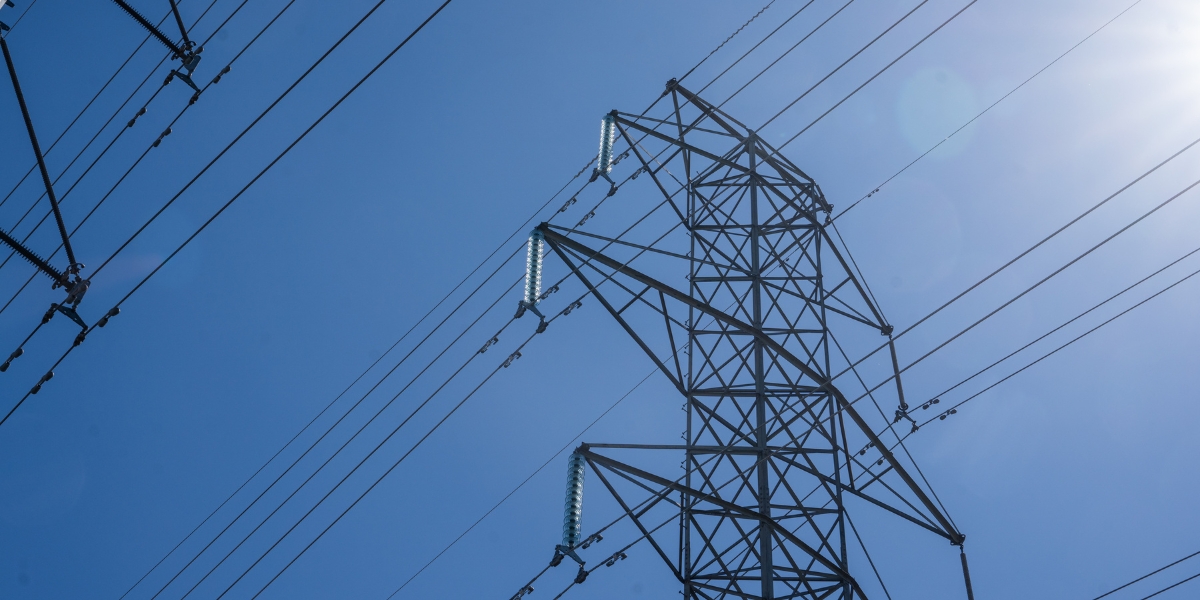
A newly proposed and highly impactful federal transmission designation called the Mid-Atlantic National Interest Electric Transmission Corridor, or NIETC, would stand to make the situation worse, overstepping state authority for transmission siting in a wide geography across Pennsylvania, Maryland, Virginia and West Virginia.
Here in Virginia, this designation would substantially harm climate and environmental justice progress by enabling expanded access to polluting fossil fuels, increase the monthly bills of ratepayers and impact lands and residents along new and expanded transmission line corridors.
Further, because the designation process under the U.S. Department of Energy has been rushed and under-advertised, action is urgently needed by members of the public to preserve state authority around transmission line siting. Please write the DOE and your elected representatives in Congress by June 24, 2024, to make your voice heard. You can use our form letter or email DOE directly at [email protected].
What is the Mid-Atlantic NIETC?
The proposed Mid-Atlantic corridor includes multiple parallel paths, each approximately two miles wide and up to 180 miles long, all in parts of Pennsylvania, Maryland, Virginia and West Virginia, and entirely within PJM Interconnection’s Mid-Atlantic region. PJM is the regional transmission organization that operates the sale of electricity in all or parts of 13 states and Washington, D.C.
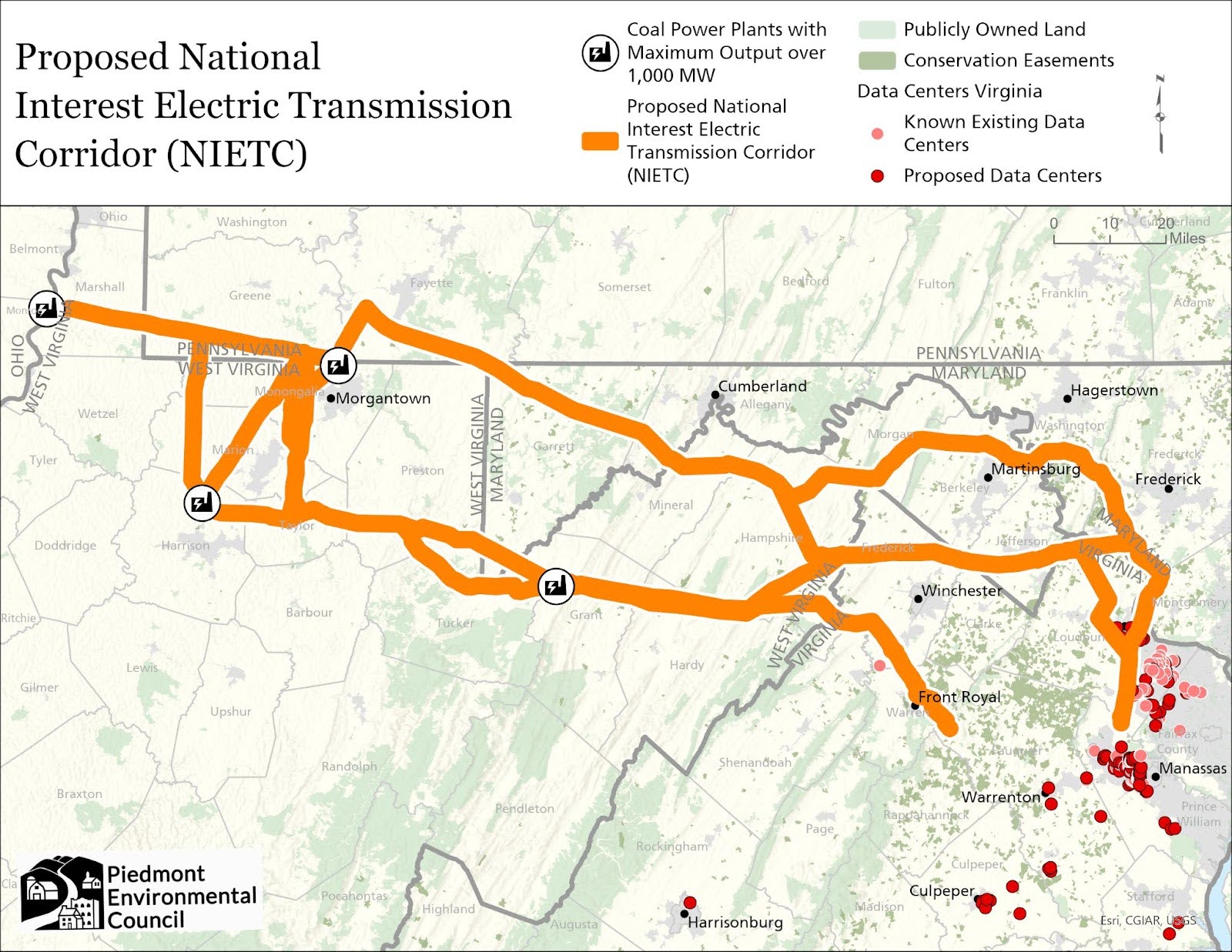
We know that a portion of this priority corridor was nominated for designation by NextEra Energy, a Florida-based company that hopes to build a 130-mile 500-kiloVolt (kV) transmission line, dubbed the MidAtlantic Resiliency Link (MARL), across western Loudoun County. This line was one of 15 selected by PJM to address the energy reliability needs of the region due to the rapid addition of new data centers in Loudoun, Prince William, and other nearby counties. Other portions of the corridor resemble transmission projects submitted for approval by PJM by Dominion and FirstEnergy Corp. View these proposals on our interactive map →
In Virginia, the energy usage of every sector – residential, commercial and industrial – is flat or declining, except for data centers. PJM has forecasted that over the next 15 years, the data center industry is predicted to drive a 4.7% annual increase in energy load growth in the Virginia Dominion service area, doubling the energy demand of the entire region and undermining statewide progress to reduce energy usage and decarbonize under the Virginia Clean Economy Act. PJM is expecting a 7.5 gigawatt (GW) increase in load in the next five years, just in Northern Virginia alone.
What does a NIETC designation do?
On May 8, 2024, the U.S. Department of Energy (DOE) released a preliminary list of 10 potential National Interest Electric Transmission Corridors (NIETC) which would allow for federal approvals of energy transmission infrastructure projects within these “priority” corridors when state authorities issue a denial or decide not to act.
A National Interest Electric Transmission Corridor (NIETC) is a new designation for areas of the country where DOE has determined the lack of adequate transmission harms consumers and that the development of new transmission would advance important national interests in that area, such as increased reliability and reduced consumer costs.
Importantly, the designation allows the Federal Energy Regulatory Commission (FERC), an independent agency under DOE that regulates the interstate transmission of electricity, to issue permits for the siting of transmission lines that would otherwise fall under the jurisdiction of a state siting authority.
Under most circumstances, FERC does not have the authority to regulate intrastate transmission line construction. That authority rests within individual states or state public utility commissions, such as Virginia’s State Corporation Commission (SCC).
However, with a NIETC designation in place, if the SCC has not acted on an application for over one year, or has denied an application, the federal government may override the permitting process and issue an approval. By cutting the SCC out of the process, decision-makers on transmission lines are even further separated from the costs and impacts of their decisions on citizens.
Why the proposed Mid-Atlantic NIETC matters
Impacts on lands and residents
In Virginia, the priority corridor would cut across public and private lands in Clarke, Fauquier, Frederick, Loudoun and Warren counties. The corridor passes through many cultural, historic and recreational resources where significant public investment has already been made: Sweet Run State Park, the Appalachian Trail, the Blue Ridge Mountains, W&OD Railroad Regional Park, the Shenandoah and Potomac Rivers, several scenic byways, the Waterford National Landmark, and the National Corridor for the Journey Through Hallowed Ground.
The corridor would also run through hundreds of private properties, possibly including lands placed under conservation easement. If property owners do not voluntarily sell their rights of ways, utility companies may acquire property via eminent domain.

Transmission rights of ways are known to fragment wildlife habitats and impact water quality by increasing runoff and the spread of invasive species during construction, which involves the removal of trees and other vegetation. Towers can be up to 200 feet or approximately 20 stories, with rights of ways up to 500 feet wide. Many residents are rightly concerned about their counties’ agricultural and tourism economies, which rely on rural areas being able to maintain their scenic beauty and sense of place.
Individual landowners and impacted residents and businesses within the proposed corridor have yet to be notified by DOE and it is unclear how FERC intends to site new lines or expand rights of ways in its communities as part of the NIETC process.
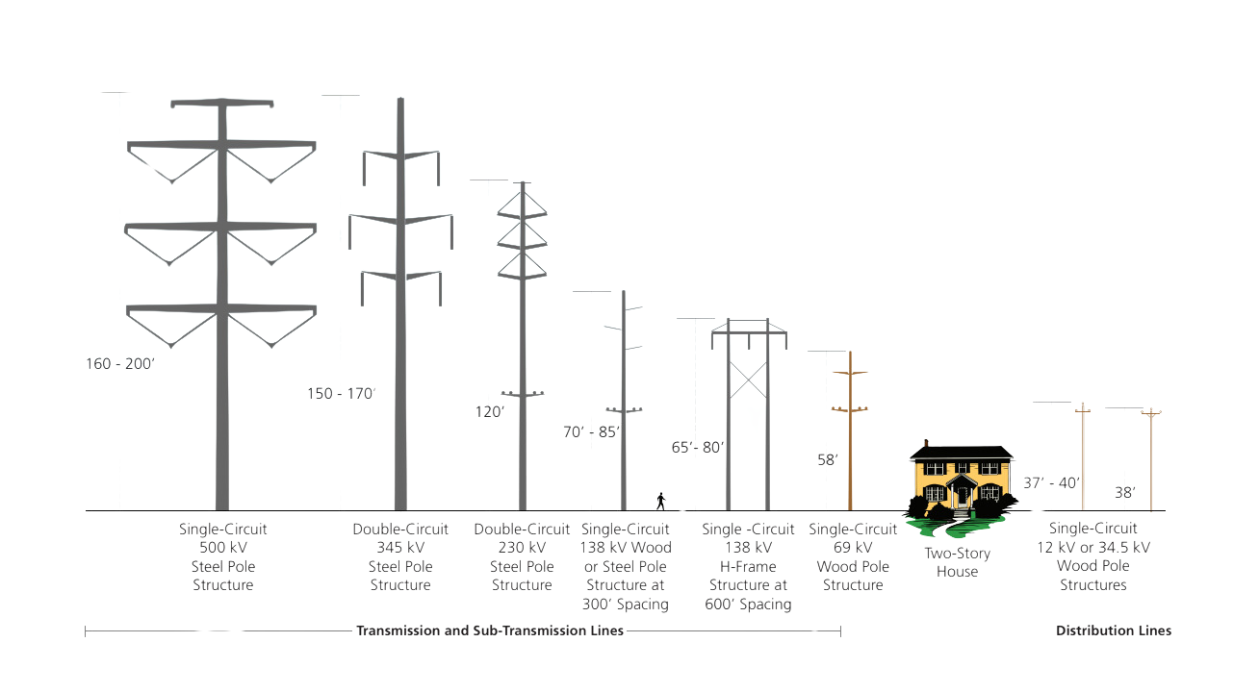
Impacts on ratepayers and consumers
There is little question as to which customers are driving this new transmission corridor in the Mid-Atlantic region. The state has nearly 180 million square feet of new data centers approved or proposed. That’s roughly the same amount of space as 1,000 Walmart Super Centers — and that’s in addition to the nearly 57 million square feet of data centers already in place. Data centers made up nearly a quarter of Dominion’s electricity sales in 2023.
If not for the data center industry, Virginia could be much further along on its goals to electrify and decarbonize the grid, including our homes and schools. Instead, those priorities are subverted by the need to keep data center campuses running. Under current state law, utilities are legally obligated to serve data centers and can pass those costs on to their customers.
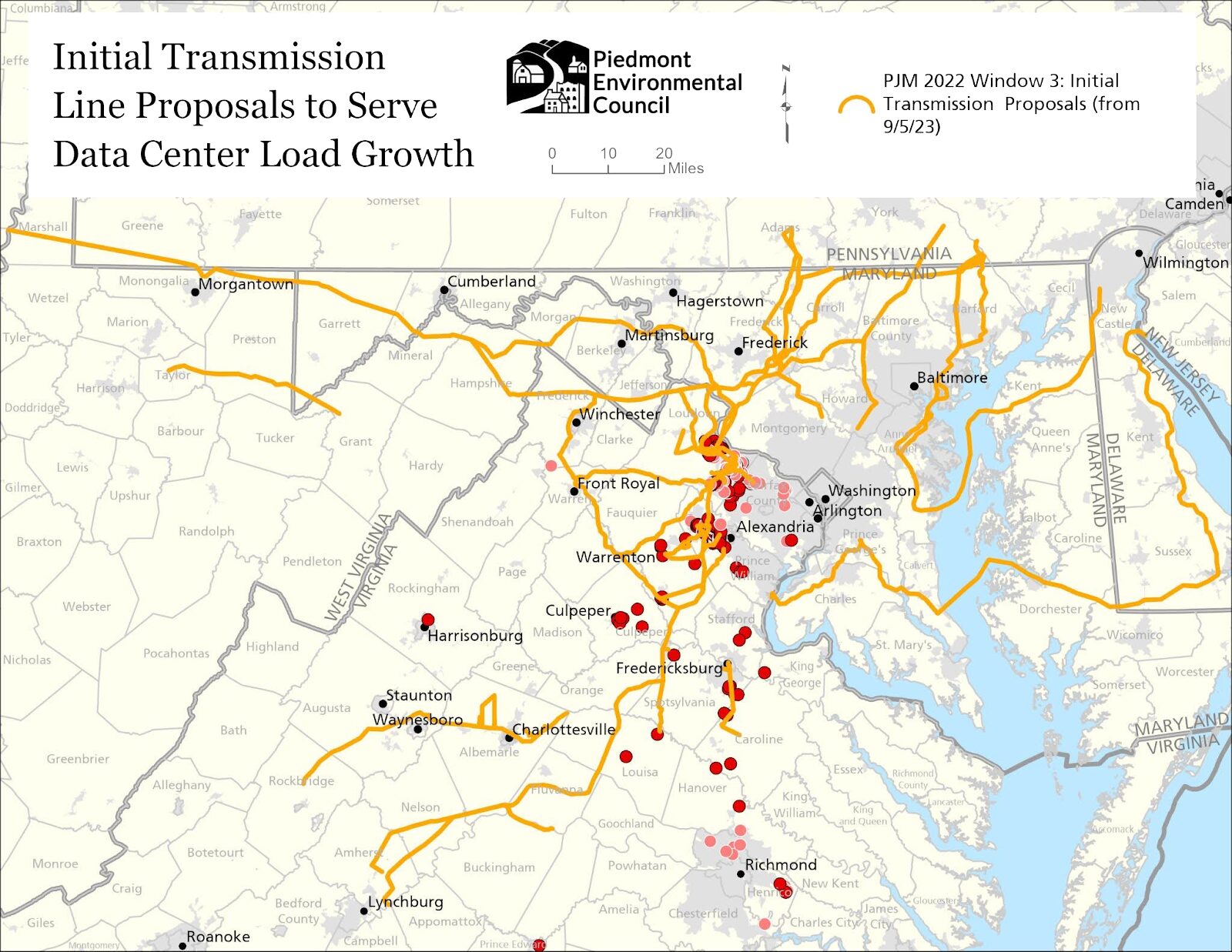
While Dominion currently offers some of the most affordable energy in the nation, this is likely to change as the costs for these massive new transmission line projects are passed along to customers, a burden that will be felt most by those already struggling to make ends meet. The company has already forecast that on average, electric bills will double in the next 10 years just to meet the power needs of data centers that were approved prior to 2023.
The NIETC designation is only a part of the picture. The proposed priority corridor includes pre-existing transmission proposals, including the MidAtlantic Resiliency Link (MARL), which is currently in the design phase, as well as two additional lines that fit with routes submitted by FirstEnergy (to the north through Maryland and West Virginia) and Dominion (to the west through Fauquier, Warren and Frederick counties) during PJM’s 2022 selection process (shown below). These two routes were not selected as a priority for Dominion in 2023, but with a NIETC designation in place would likely be slated for approval in the near future.
PEC and other interested parties plan to participate in SCC proceedings to advocate on behalf of communities and in favor of alternatives to new above-ground transmission lines.
Impacts on climate and environmental justice goals
As currently proposed, this Mid-Atlantic corridor will push back climate progress in Virginia, Maryland, and West Virginia and further burden vulnerable communities to feed the explosive energy demand of a single industry.
As reported in the Washington Post, transmission lines included in this priority corridor would serve to bring more power from coal-fired generation plants in West Virginia to meet the immediate generation needs of data centers here in Northern Virginia. This short-term decision will have long-term impacts on the climate, local air quality, and public health, and the people and businesses paying for the additional infrastructure.
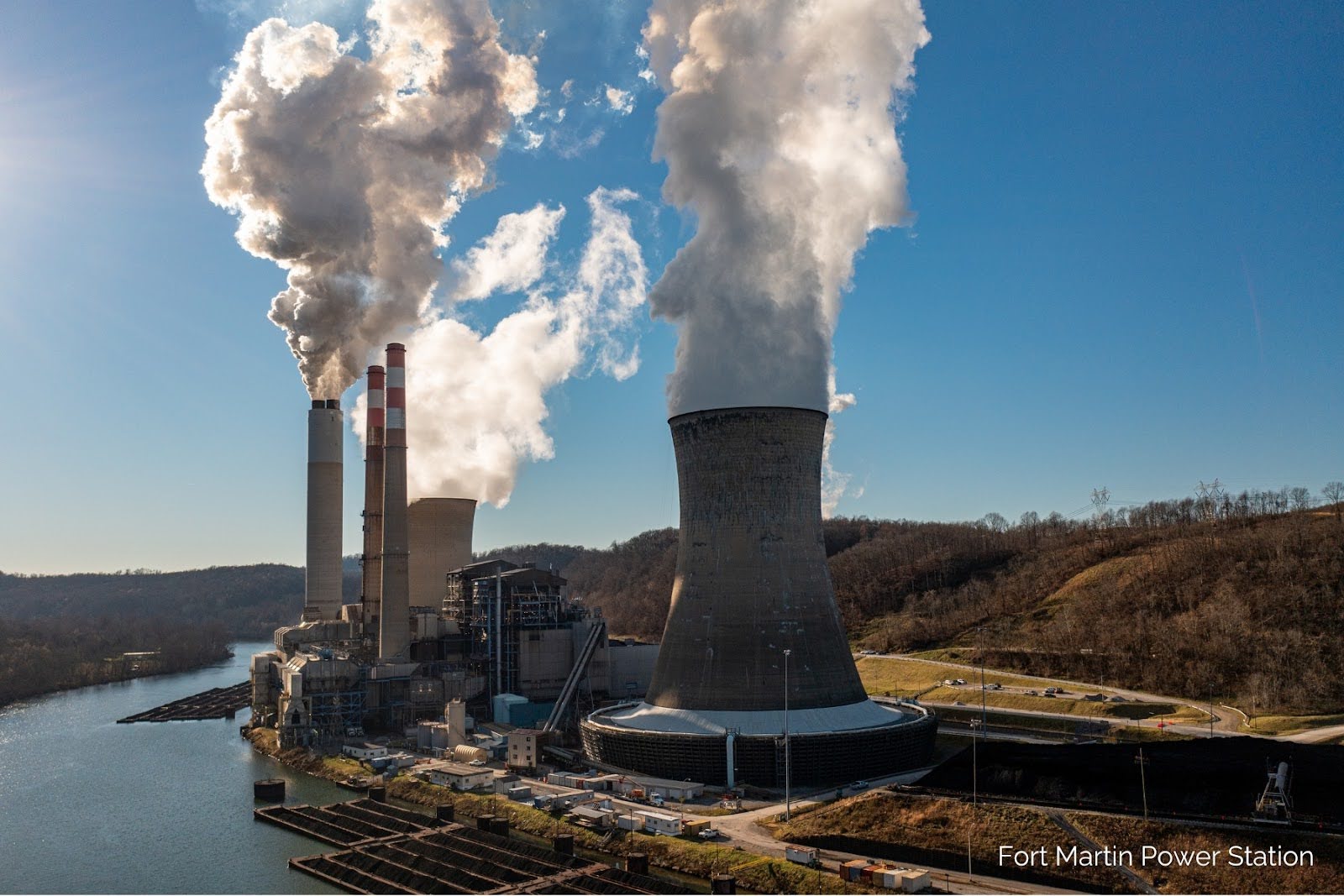
At least two of the coal plants that will be connected with these new lines to western Loudoun County, Fort Martin Power Station (1,098 MW) and Harrison Power Station (1,984 MW), were planned to be retired by 2030 as part of the shift to renewables. They now must stay online for five to ten years longer, leaving nearby residents to continue living with the deadly health risks of air pollutants that are known to cause asthma, cancer, and heart and lung disease. Additionally, places like Jefferson County, West Virginia, which has significant housing density, will see the transmission lines that already cut through their communities expand, with right-of-ways taking land from people’s backyards.
Where are we in the process?
Currently, DOE is in Phase 2 of the NIETC designation process, which includes an opportunity for public comment on the proposed designations. Following Phase 2, DOE will decide which of the 10 NIETC proposals should move from the preliminary list to Phase 3, expected to happen in fall 2024.
In Phase 3, DOE will draft NIETC designation reports, conduct environmental reviews, proceed with government-to-government consultation with any impacted Tribal Nations as appropriate, and engage in a public engagement process.
Our understanding is that to obtain full party status and the ability to request a rehearing or appeal on the NIETC designation in any court of law, you must provide public comment before June 24, 2024, as per DOE’s guidance (see section “Post-NIETC Designation”). This is critically important for legal standing.
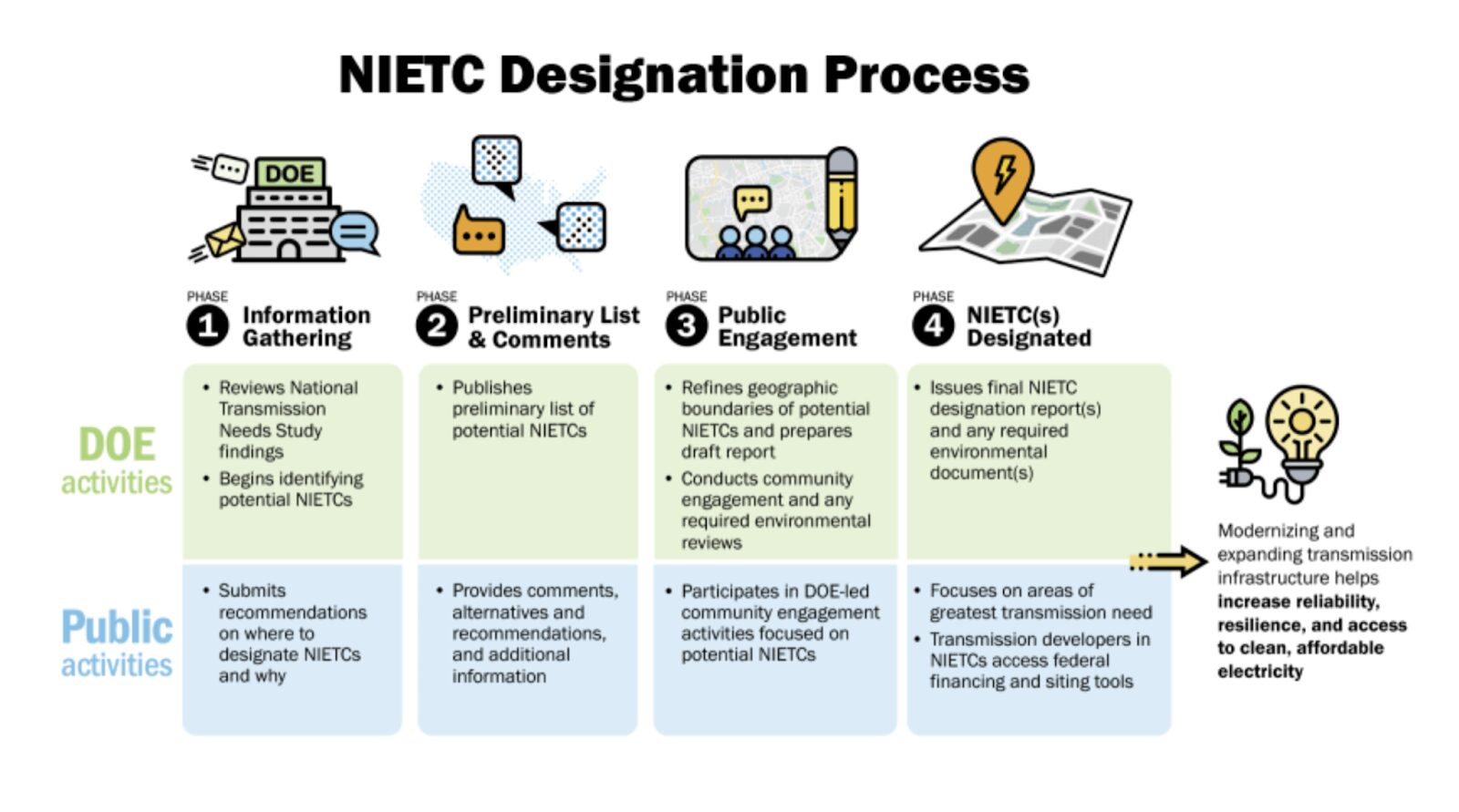
What can you do? Submit comments by June 24
Before 5 p.m. EST on June 24, 2024, submit comments to the DOE ([email protected]) expressing concern about this rushed process and the impacts of the proposed corridors. DOE has invited the public to submit comments on its preliminary list of NIETC proposals, specifically asking for comment on:
- Transmission needs within the potential NIETCs and associated consumer harms;
- The geographic boundaries of the potential NIETCs; and
- Potential impacts on environmental, community, and other resources within the potential NIETCs.
Because this is a new designation, it’s important that the public process around these first potential NIETCs set a strong precedent in terms of public outreach and engagement. We urge you to comment on the shortcomings of the process as it stands now so that DOE can make the necessary changes to ensure robust stakeholder involvement.
For your convenience, we’ve drafted a form letter that you can use to contact the U.S. Department of Energy and your elected representatives in Congress.
The letter asks for the following:
- For DOE to immediately contact landowners located within the proposed corridor via mail to notify them that such a designation is being considered and to inform them of their right to comment
- For DOE to make all information from Phase 1 publicly available, including recommendations it received for NIETC designations and detailed maps of the proposed transmission corridors
- For DOE to hold multiple in-person public meetings in communities along the corridor (e.g. in Loudoun and Fauquier counties) with at least two weeks prior public notice in local papers, and to provide an accessible online option
- For DOE to extend the preliminary comment period beyond 45 days to allow for informed public engagement
- For DOE to provide clarity on how legal standing (party status) is impacted by filing information or recommendations in Phase 1 or commenting in response to the notice of the preliminary list of potential NIETC designations in Phase 2
We encourage you to customize our template with your own words based on which issues resonate with you. Some points you may want to include are:
- The financial burden of all this new infrastructure on Virginia ratepayers, many of whom are already struggling to make ends meet and cover their electric bills
- Air quality, public health and climate concerns of burning more coal to power data centers, even as other energy sectors have declined in demand
- Economic impact on the state’s heritage tourism, agritourism and recreation industries
- Lack of documentation for how the corridor would impact scenic, historic, natural and cultural resources in the rights of way
- Unfair environmental and economic burden on Appalachian coal communities, and Virginia as a whole
- Federal encroachment on state and local planning
- Lack of federal or state action on data center industry and utility reform and subsidization of companies like Amazon, Meta, Microsoft, etc.
- Failure to determine the validity of energy demand projections or to consider alternatives to new building transmission, such as higher energy efficiency standards
